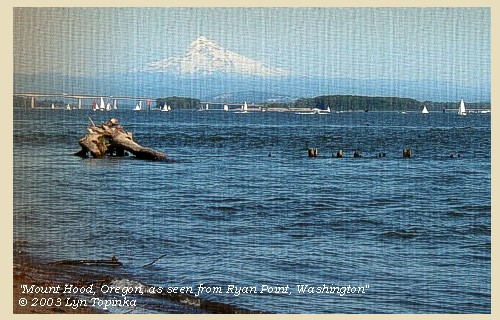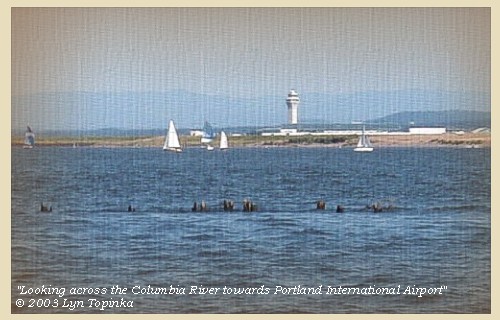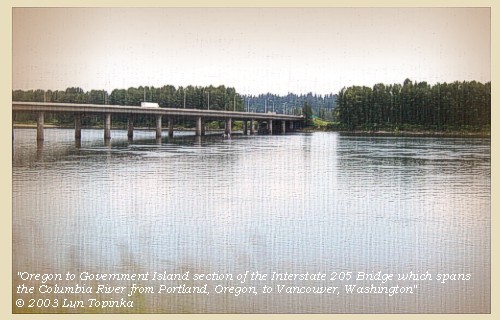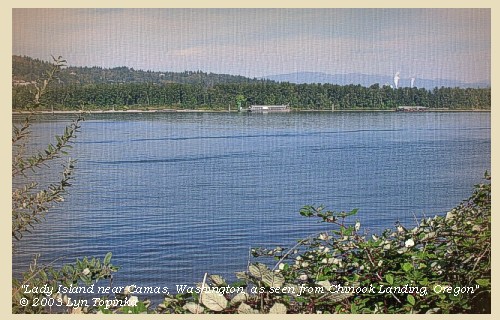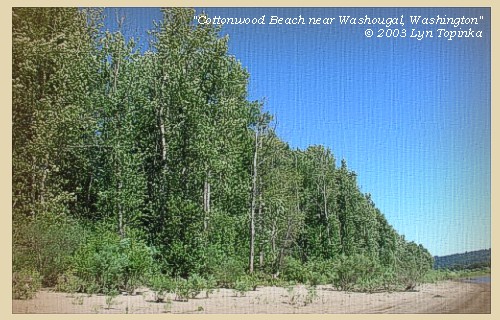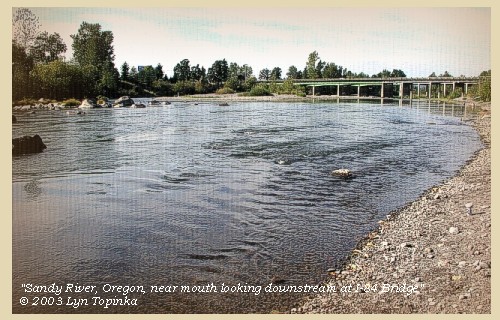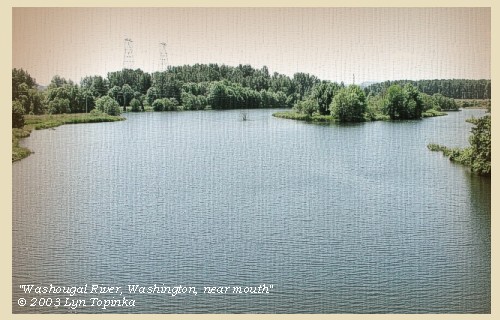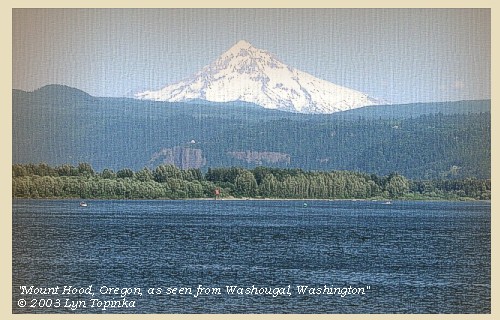The Volcanoes of
Lewis and Clark
Lewis and Clark
|
March 31, 1806 On the Banks of the Columbia - Ryan Point to Cottonwood Beach Camp |
|
Home
The Volcanoes of Lewis and Clark Map of the Journey Volcanoes, Basalt Plateaus, Major Rivers, etc. The Volcanoes Mount Adams, Mount Hood, Mount Jefferson, Mount Rainier, and Mount St. Helens CALENDAR of the Journey October 1805 to June 1806 Along the Journey Pacific Northwest Maps - Columbia River, Volcanoes, Flood Basalts, Missoula Floods, Geology, etc. The Corps of Discovery The Journey of Lewis and Clark About the Reference Materials The Journals, Biddle/Allen, DeVoto, Gass, Moulton, Topo Maps, and others USGS Lewis and Clark Links Links to USGS Websites highlighting the Lewis and Clark Journey Resources Publications Referenced and Websites Visited |
PREVIOUS
March 30 Vancouver, Washington, Ridgefield NWR to Ryan Point |
March 31
On the Banks of the Columbia, Ryan Point to Cottonwood Beach Camp Mount Hood, Portland International Airport, Government Island and Government Island State Recreation Area, Interstate 205 Bridge, Lady Island, Cottonwood Beach, Sandy River, Sandy River in 1805, Lewis and Clark State Recreation Area, Washougal River, Mount Hood |
CONTINUE
April 1 Gathering Provisions, Cottonwood Beach Camp and the Sandy River |
|
Heading for Home - March 1806
On the Banks of the Columbia - Ryan Point to Cottonwood Beach Camp |
| Lewis and Clark's camp of March 30, 1806, downstream of Ryan Point, Vancouver, Washington, and upstream of the Interstate 5 Bridge, at present-day Columbia River Drive and Columbia Shores Boulevard. This area is now covered with condominiums. |
| Monday, March 31, 1806 |
| We set out very early, and at eight o'clock landed on the north side of the river [Washington State] and breakfasted. |
| Mount Hood is visible along this stretch of the river. |
| Directly opposite is a large wooden house, belonging to the Shahala nation, [location near today's Portland International Airport, Portland, Oregon] the inhabitants of which came over to see us. We had observed in descending the river last year [November 4, 1805], that there were at the same place, twenty-four other houses built of wood and covered with straw, all of which are now destroyed: on inquiry the Indians informed us, that their relations whom we saw last fall, usually visit them at that season for the purpose of hunting deer and elk, and collecting wappatoo, but that they had lately returned to their permanent residence at the Rapids, we presume in order to prepare for the salmon season, as that fish will soon begin to run. |
| At ten o'clock we resumed our route along the north side of the river, and having passed Diamond island [Government Island], |
| and Whitebrant island [Lady Island], |
| halted for the night at the lower point of a handsome prairie [near Cottonwood Beach, Washougal, Washington]. |
| Our camp [Cottonwood Beach] which is twenty-five miles from that of last night [downstream of Ryan Point, Vancouver, Washington], is situated opposite to the upper entrance of Quicksand river: [Sandy River] |
| a little below a stream from the north empties itself into the Columbia [Washougal River], near the head of Whitebrant island [Lady Island] It is about eighty yards wide, and at present discharges a large body of very clear water, which near the Columbia overflows its low banks, and forms several large ponds. The natives inform us that this river is of no great extent, and rises in the mountains near us, and that at a mile from its mouth it is divided into two nearly equal branches, both of which are incapable of being navigated, on account of their numerous falls and rapids. Not being able to learn any Indian name, we called it Seal river [Washougal River], from the abundance of those animals near its mouth. At the same place we saw a summer duck, or a wood duck, as it is sometimes called; it is the same with those of the United States, and the first we had seen since entering the Rocky mountains last summer. The hunters who had been obliged to halt below Seal river [Washougal River] on account of the waves being too high for their small canoe, returned after dark with the unwelcome news that game was scarce in that quarter. |
| " ... The three Indians encamped near us and visited our fire we entered into a kind of a Conversation by signs, of the Country and Situation of the rivers. they informed us that Seal river headed in the mountains at no great distance. quick Sand river was Short only headed in Mt. Hood which is in view and to which he pointed. this is a circumstance we did not expect as we had heretofore deemed a comsiderable river. ..." [Clark, March 31, 1806] |
| " ... Mount Hood bears East from this place and is distant from this place about 40 miles. ..." [Clark, March 31, 1806] |
|
|
|
The Camp - March 31 through April 5, 1806:
Cottonwood Beach, Washougal, Washington. |
| Home | Previous | Continue |
If you have questions or comments please contact: GS-CVO-WEB@usgs.gov
June/July 2004, Lyn Topinka
The Volcanoes of Lewis and Clark Home Page | CVO Home Page


